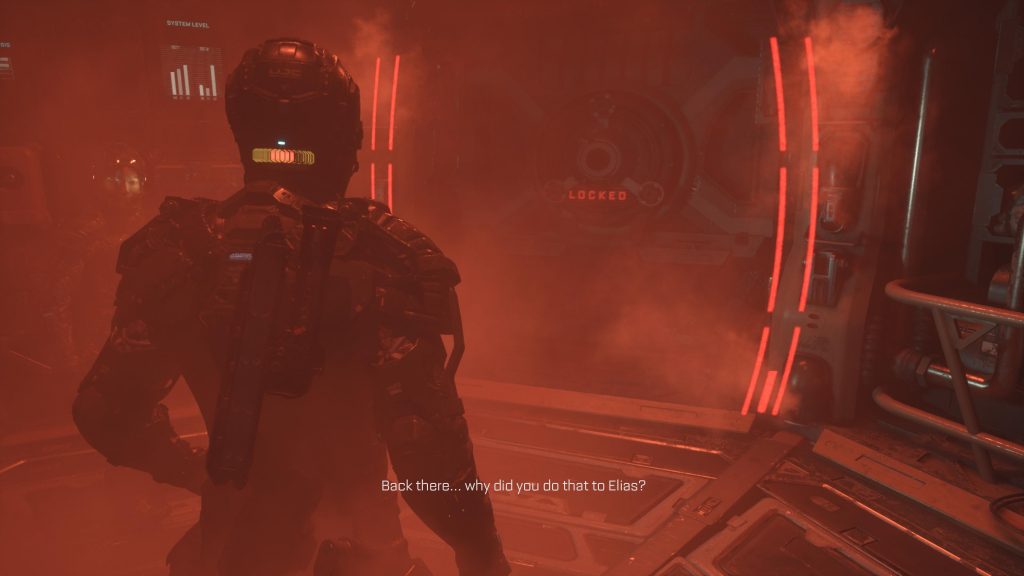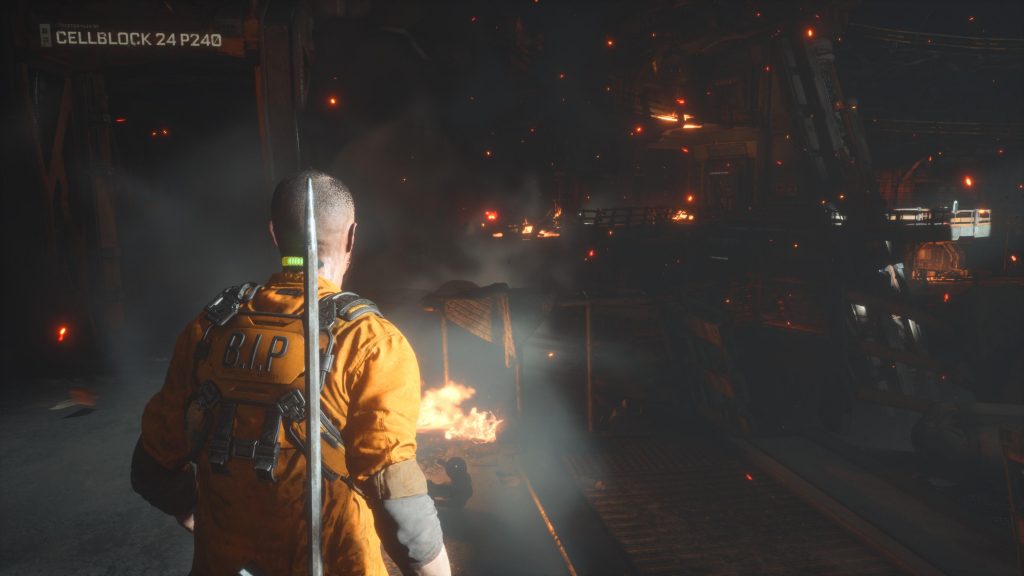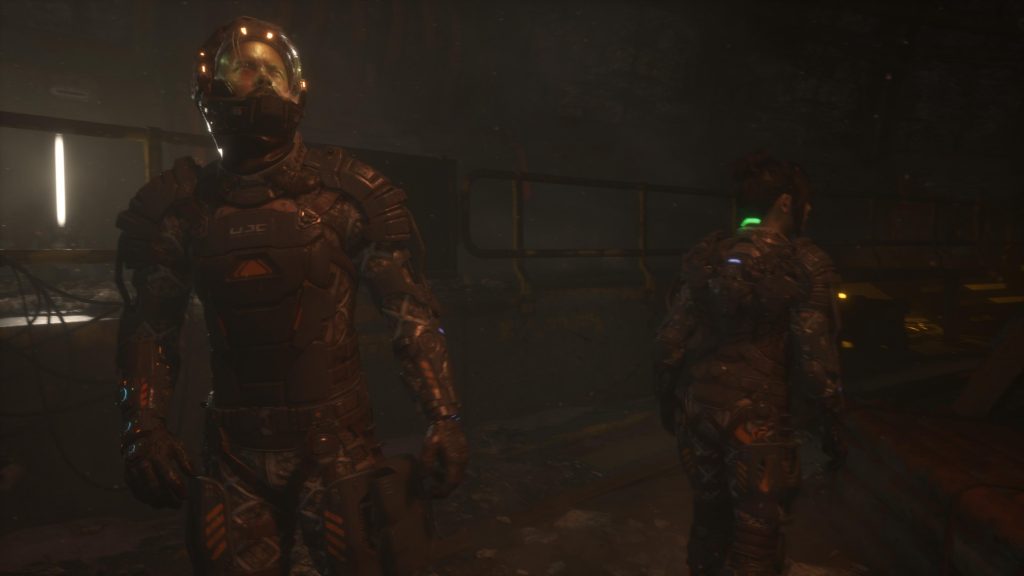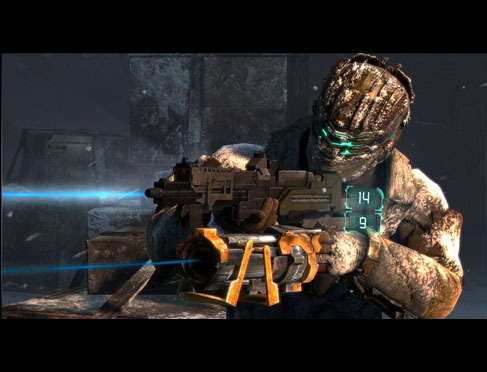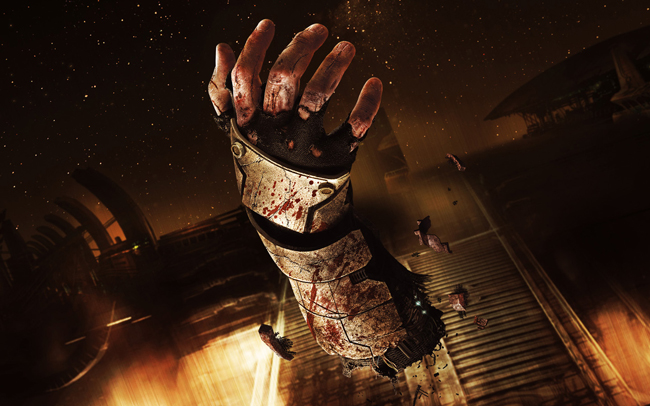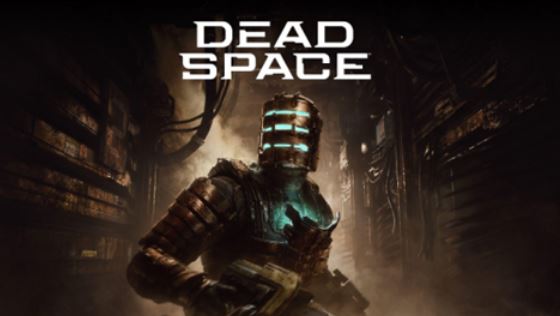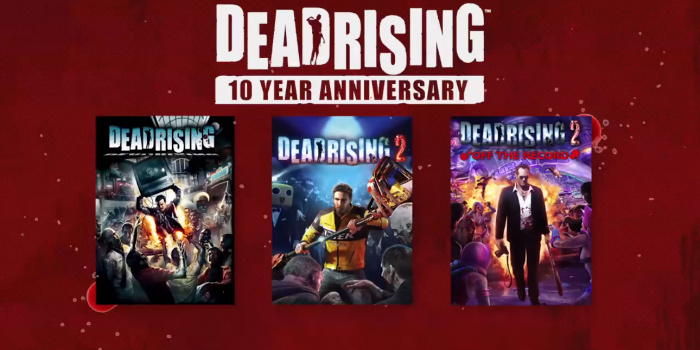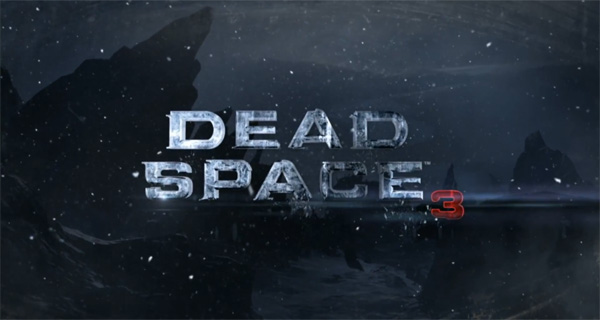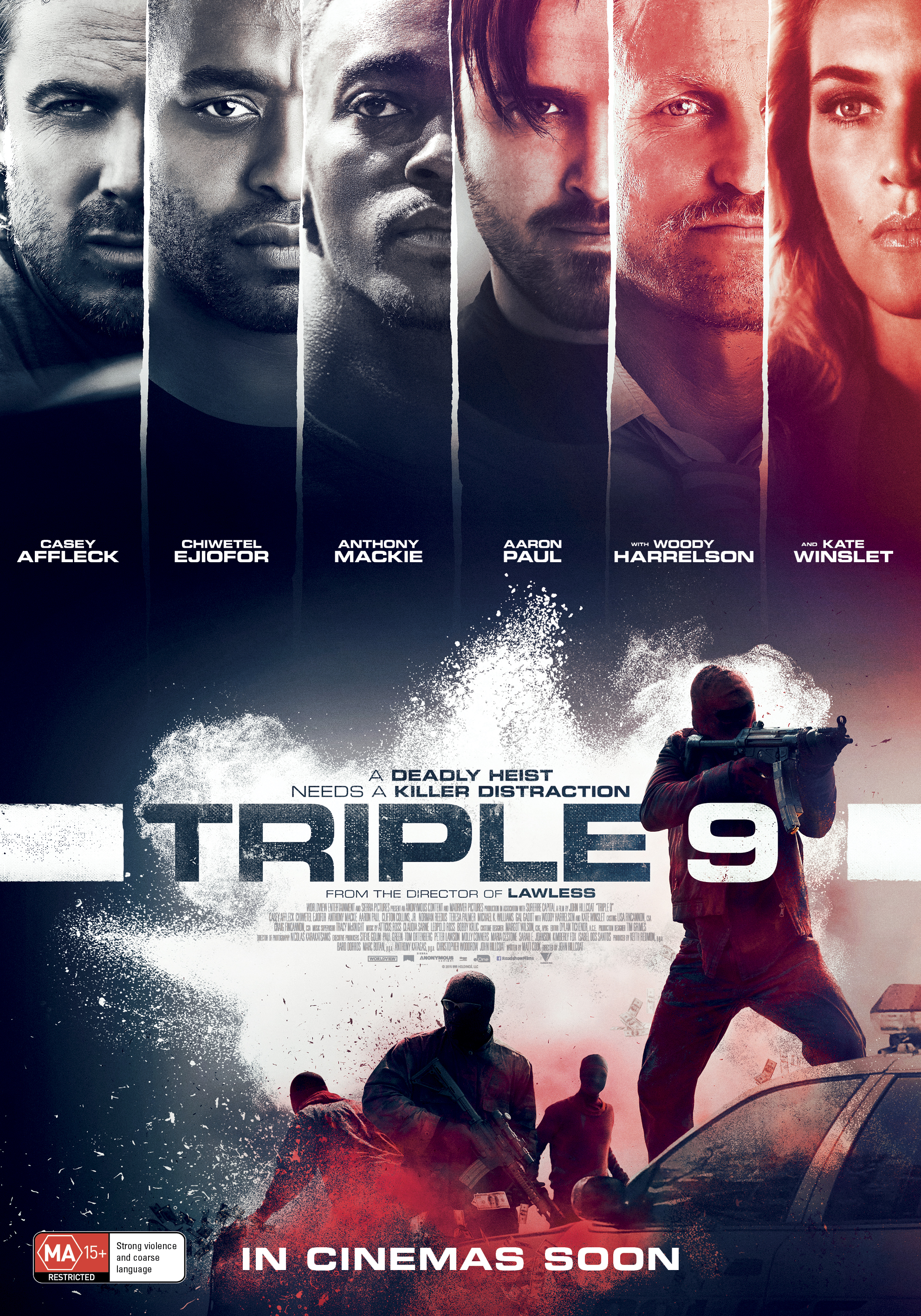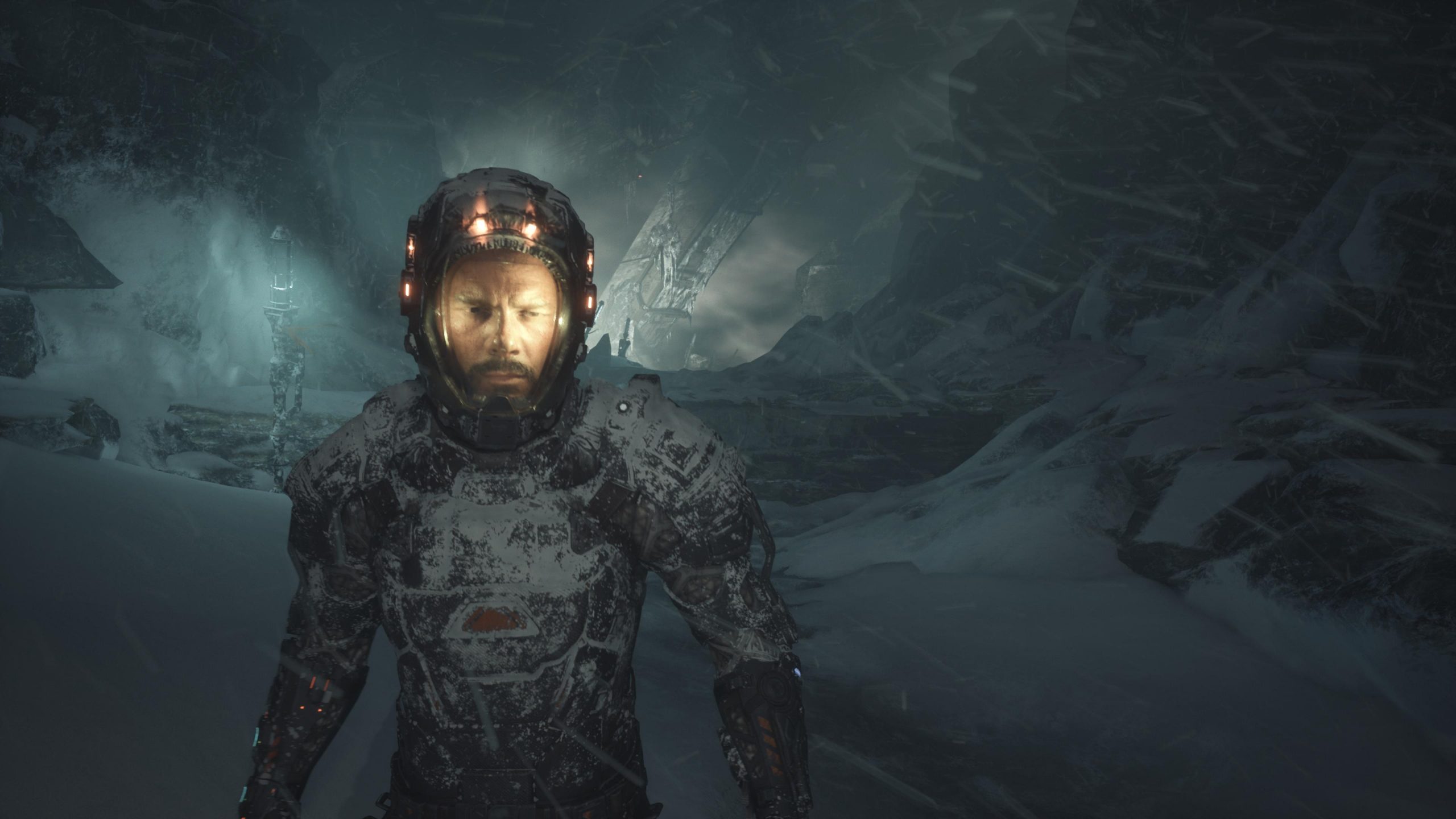
The Callisto Protocol looks and sounds every part a triple-A blockbuster title, with famous celebrity actors, meticulously detailed environments and a creeping orchestral score. It also feels like several other triple-A titles, not the least of which is the soon-to-be-remade Dead Space, whose co-creator is a director on Callisto. While technically proficient and at times creative, The Callisto Protocol also feels like it’s missing a reason to be, beyond ‘well, we did it before, and now we need a new Dead Space’, as it settles into a groove as a sufficiently gruey sci-fi horror.
The story will be familiar to anyone who’s seen an Alien movie. Josh Duhamel plays Jacob, a cargo runner in the future of space, who transports goods and doesn’t ask questions between the moons of Jupiter – Callisto and Europa. After a violent uprising on Europa, Jacob’s latest run is de-railed by an apparent terrorist, played by Karen Fukuhara, and he crashes into Callisto, where he is immediately arrested and imprisoned in its ‘Black Iron’ facility. Jacob’s day doesn’t improve, as a biophage soon contaminates the prison, mutating its inhabitants into vicious monsters as its robot guards move to terminate any living thing, and his only hope for escape lies in co-operating with what few inmates are left alive.
You can more or less predict the beats the story takes, right up to its ending, especially if you’ve seen pretty much any sci-fi horror at all or especially if you’ve played Dead Space. The pieces are all there, they’re just swapped out for similar versions – a shady cult in Dead Space becomes a SEELE-esque mysterious organisation in Callisto. The details don’t really make a difference, but if you are interested, you can listen to plot details explained through audio logs found through the game. Unfortunately, you can’t listen to these in-game and only through a static menu-screen, which given their length and frequency, means that unless you’re really engaged by the story you’re unlikely to listen to many of them at all.
It’s a visually very pretty game, although pretty is probably the wrong word for it given so much attention is given to the blood-and-guts strewn hallways of a decaying space prison. It looks like a blockbuster Hollywood movie, down to the stunning recreation of its lead actors, particularly Josh Duhamel’s sweaty face, and while I doubt the monster designs will win any points for originality, they do have a lot of ways of slicing off the top half of Jacob’s head, all of which is recreated in particularly gruesome detail.
The Callisto Protocol does do something unique with its combat system, focusing on close-quarters fighting. As you face an enemy, you can tilt with the left stick to avoid incoming attacks and block, while using the triggers to get in strikes with your futuristic baton. The system works best in one-on-one encounters, as you slip into a rhythm of dodging and hitting, while following up with quick blasts from your equipped weapon, although throwing additional enemies into the mix can confuse where exactly you’re meant to be locking onto. Nevertheless, for most of the game, the melee combat feels good.
On the other hand, long range combat is fairly basic, with a small range of relatively-similar feeling guns, none of which feel like they have much of an impact on baddies. They’re only really useful in preventing further mutations, signalled by tentacles emerging from enemy bodies, but never feel incredibly accurate or useful. Unfortunately, almost every major boss encounter relies on gunplay (and all of which, apart from one, re-use a single boss model and encounter type). While this has the potentially intended effect of a horror game, making the player feel ill-equipped to handle the situation as gunplay isn’t their strength, it mainly has the effect of being incredibly frustrating. Jacob has to go through the animations of unequipping his current gun, equipping the new one, reloading the new one etc, several times as you run of out ammo for each gun, while you try to manoeuvre his ass around the playfield and hope he his run command doesn’t randomly decide to stop working. Speaking of frustrating, the checkpointing in Callisto is woefully uneven, to the point it almost completely discouraged me from exploration after failing to keep up with my progress when exploring off the beaten path.
Jacob also has access to Callisto‘s version of Dead Space‘s TK ability, to levitate objects in mid-air and send them hurtling at enemies, but while it does prove fun to occasionally slam enemies against walls of spikes or into spinning fans, it’s unreliable in picking up what you want, and slow to re-charge, meaning it’s unlikely to be part of the core abilities you access. Stealth is also utilised in various areas, particularly against a type of blind monster you’ll need to sneak around and stealth-stab them from behind. This generally works well, although I will say they cram these areas with entirely too many enemies, meaning it’s not necessarily faster to be stealth-takedowning monsters than it would be just to plow straight through them with melee combat.
As far as scares go, The Callisto Protocol is more generally startling than what I would call scary, although there are plenty of attempts at jump-scares, particularly with traps and small critters littering Black Iron’s halls. The one time the horror aspect of the game really came together was in a final stretch of hallways in the lead-up to the end of the game, which manages to combine tense sound design, surprise enemy appearances and claustrophobic spaces into a genuinely scary rush to the finish. It’s a shame I didn’t feel that way more often, but for this stretch, the best aspects of Callisto managed to come together in a way that worked.
If you’re playing on PlayStation 5, as I was, then I do have to give a shout-out to the particularly well-implemented DualSense vibration, which conveys not only standard knocks and jolts but also Jacob’s pace and movement, and adds a lot to the atmosphere of Callisto. In fact, it’s even used very cleverly to circumvent some issues with the irritating final boss encounter, where Jacob must continually sprint away from an enemy. The DualSense actually conveys the rumble of the boss’ footsteps as they close in on you, even giving you a general direction to where he’s coming from, giving you extra information to beat the encounter when the camera and combat fail you. It’s a nice creative use of the technology.
The Callisto Protocol is a generally solid horror game, that looks like a million dollars and offers just about everything you’d expect from a spooky story set on the moons of Jupiter in the future. While much of it is derivative, there are some neat ideas and creative uses of technology that help it feel more like a next-gen title. However, the gameplay is still often frustrating, and the story doesn’t really offer any twists that would distinguish this from the creator’s previous Dead Space games. If you’ve got a deep affinity for space horror like Aliens, Pitch Black or Pandorum, then you’ll be right at home with the vibe that The Callisto Protocol is putting out, even if you’ve seen it all before.
-Detailed visuals fully convey the grimey future -Close-quarters combat system is a neat idea, and leads to brutal encounters -Dual Sense is used quite well
-Ranged combat is not so great, and every boss encounter relies on it -Checkpointing is all over the place, and can be so bad it discourages exploration -The story and world never feel as engaging as their obvious influences

